40 free body diagram car
Part B Draw a free-body diagram of the car. Suppose that the car is moving to the right. Draw the vectors starting at the black dots. The location and orientation of the vectors will be graded. The length of the vectors will not be graded. O No elements selected f Select the elements from the list and add them to the canvas setting the appropriate. The free body diagram of a car traveling at a constant speed consists mainly of five forces, when considered in an actual situation. These vectors are that of friction, gravity, normal force, air resistance, and engine driving force. In a hypothetical situation without external forces (friction and air resistance), only the three remaining ...
R5Improve their ability to draw free body diagrams. R5Be able to identify errors in diagrams and correct them. R5Recognize free body diagrams as representations of forces, and connect them with real-world objects and phenomena. Motivation R5Free body diagrams are a key problem-solving strategy for physics and engineering students.

Free body diagram car
A free-body diagram for the car is shown at left. Both the normal force, N (blue components) and the friction force, f (red components) have been resolved into horizontal and vertical components. Notice that the friction force acts up the incline, to keep the car from sliding toward the center of the turn. Point mass model. The simplest model of a car is to treat the entire vehicle as a point mass. On a free body diagram we have vertical force balance for a stationary car. When the car accelerates, there is a horizontal forward force on the car, and a corresponding backwards horizontal force on the ground.As the car picks up speed, air resistance produces a backwards force. $\begingroup$ That's a good free body diagram for a car slamming on the brakes :) $\endgroup$ - Gregor Thomas. Oct 16 at 1:19. Add a comment | 4 Answers Active Oldest Votes. 20 $\begingroup$ The friction forces on the bottom of the tyres should point in the direction of motion, not the opposite direction. ...
Free body diagram car. A 1200kg car pushes a 2100 kg truck that has a dead battery to the right. When the driver steps on the accelerator, the drive wheels of the car push against the ground with a force of 4500 N . What is the magnitude of the force the car applies to the truck? Part C Now, draw a free-body diagram for the car. Diagram A Car Best Car Light Diagram. force diagram images Google Search Chemistry & Physics Pinterest. We collect a lot of pictures about Free Body Diagram Car. and finally we upload it on our website. Many good image inspirations on our internet are the most effective image selection for Free Body Diagram Car. . Draw A Free-body Diagram for the Car. drawing free body diagrams physicsclassroom an example of a free body diagram is shown at the right the free body diagram above depicts four forces acting upon the object objects do not necessarily always have four forces acting upon them there will be cases in which the number of forces depicted by a free body diagram will be one two or three solved draw ... I make a free-body diagram for a car that accelerates to the right. I make a free-body diagram for a car that accelerates to the right.
A free-body diagram is a diagram that is modified as the problem is solved. Normally, a free body diagram consists of the following components: The number of forces acting on a body depends on the specific problem and the assumptions made. Commonly, air resistance and friction are neglected. A free-body diagram can be drawn very simply, with squares and arrows, or you can make it much more complex. The only requirement is that you or someone else looking at it should be able to understand what the diagram is telling. A free-body diagram (FBD) is a representation of a certain object showing all of the external forces that acts on it. Summary. This video consists of four sections: a brief refresher on the method for drawing free body diagrams, examples of free body diagrams with an opportunity to practice, examples of situations in which diagrams have been drawn incorrectly (and corrections for them), a final segment that draws connections between free body diagrams and the physical situations they describe. Free-body diagrams Free-body diagrams are used to show the relative magnitude and direction of all forces acting on an object. This diagram shows four forces acting ... The car is coasting down the hill, there is dragging friction of the road (left pointing arrow) as well as gravity and normal forces, but no applied force.
The car shown below is moving and then slams on the brakes locking up all four wheels. The distance between the two wheels is 8 feet and the center of mass is 3 feet behind and 2.5 feet above the point of contact between the front wheel and the ground. Draw a free body diagram of the car as it comes to a stop. Public Domain image, no author listed. The car shown below is moving and then slams on the brakes locking up all four wheels. The distance between the two wheels is 8 feet and the center of mass is 3 feet behind and 2.5 feet above the point of contact between the front wheel and the ground. Draw a free body diagram of the car as it comes to a stop. A free-body diagram can be drawn very simply, with squares and arrows, or you can make it much more complex. The only requirement is that you or someone else looking at it should be able to understand what the diagram is telling. A free-body diagram is a representation of a certain object showing all of the external forces that acts on it. Free Auto Repair Diagrams. Below we provide access to three basic types of diagrams that will help in the troubleshooting and diagnosis of an automotive related problem. Wiring diagrams are one of the most common these days with all the added electronics. The bells and whistles tend to break the most often.
A car pushes a block across the floor. (assume that it is moving from left to the right) Draw a free body diagram for the car showing: Force by block on car. Force of friction. Force of Gravity. Normal force. Homework Equations The Attempt at a Solution Normal force Straight up, gravity straight down.
Once again, we apply the general method, starting with a diagram and a free-body diagram in Figure 5.21. We then draw a free-body diagram, which shows an upward normal force and a downward force of gravity. The system can be you or the car - the analysis is the same.
A free-body diagram for the car on the banked turn is shown at left. The banking angle between the road and the horizontal is (theta). The normal force, N, has been resolved into horizontal and vertical components (the blue vectors). In the vertical direction there is no acceleration, and: so:

Your Car Is Accelerating To The Right From A Stop A Draw A Free Body Diagram For The System B Identify All The Forces Acting On The Car I Normal Force Ii Weight
Free body analysis of car braking on all wheels. For a car of mass M, CofG at height h above ground, setback l from the front axle, calculate the vertical reaction at the front and rear wheels and hence the torque provided by those wheels. ... Free body diagram of car decelerating ...
Free Body Diagrams When objects slow down (decelerate), they move in the direction OPPOSITE the net force. Example: A car coasts rightward while slowing down. MOTION F friction F gravity Fnormal Since the car is coasting to the right, there is no force being applied to the right.
A free-body diagram is a representation of an object with all the forces that act on it. The external environment (other objects, the floor on which the object sits, etc.), as well as the forces that the object exerts on other objects, are omitted in a free-body diagram. Below you can see an example of a free-body diagram:
Drawing Free-Body Diagrams. Free-body diagrams are diagrams used to show the relative magnitude and direction of all forces acting upon an object in a given situation. A free-body diagram is a special example of the vector diagrams that were discussed in an earlier unit. These diagrams will be used throughout our study of physics.
Description
As an example free body diagram on a ramp is given below in the figure. Source: i.ytimg.com. For example, fbd is used to calculate the force required to push a car on a hilly road or force required to hold a book. Source: www.conceptdraw.com. The free body diagram is a basic mechanical tool tha is extremely useful in fea analysis to check out ...
Draw a free-body diagram; be sure to include the friction of the road that opposes the forward motion of the car. A runner pushes against the track, as shown. (a) Provide a free-body diagram showing all the forces on the runner. ( Hint: Place all forces at the center of his body, and include his weight.)
A free body diagram models the forces acting on an object. The object or 'body' is usually shown as a box or a dot. The forces are shown as thin arrows pointing away from the centre of the box or ...
$\begingroup$ That's a good free body diagram for a car slamming on the brakes :) $\endgroup$ - Gregor Thomas. Oct 16 at 1:19. Add a comment | 4 Answers Active Oldest Votes. 20 $\begingroup$ The friction forces on the bottom of the tyres should point in the direction of motion, not the opposite direction. ...
Point mass model. The simplest model of a car is to treat the entire vehicle as a point mass. On a free body diagram we have vertical force balance for a stationary car. When the car accelerates, there is a horizontal forward force on the car, and a corresponding backwards horizontal force on the ground.As the car picks up speed, air resistance produces a backwards force.
A free-body diagram for the car is shown at left. Both the normal force, N (blue components) and the friction force, f (red components) have been resolved into horizontal and vertical components. Notice that the friction force acts up the incline, to keep the car from sliding toward the center of the turn.
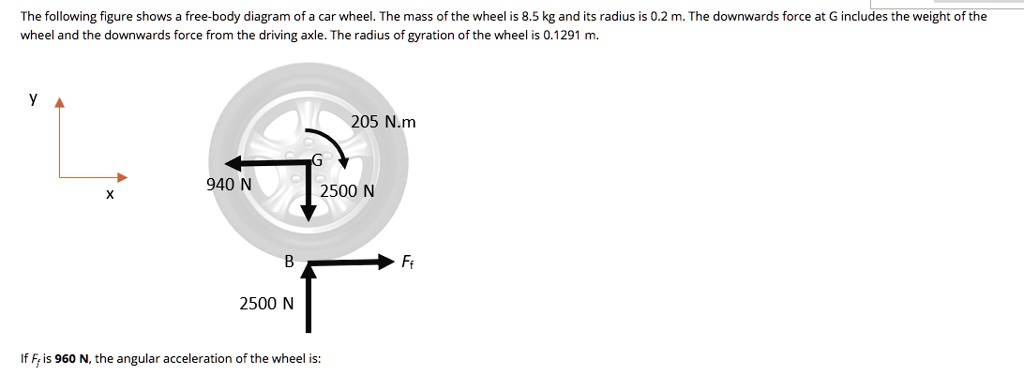
Solved The Following Figure Shows Free Body Diagram Of Car Wheel The Mass Of The Wheel 8 5 Kg And Its Radius Is 0 2 M The Downwards Force At G Includes The Weight Of The
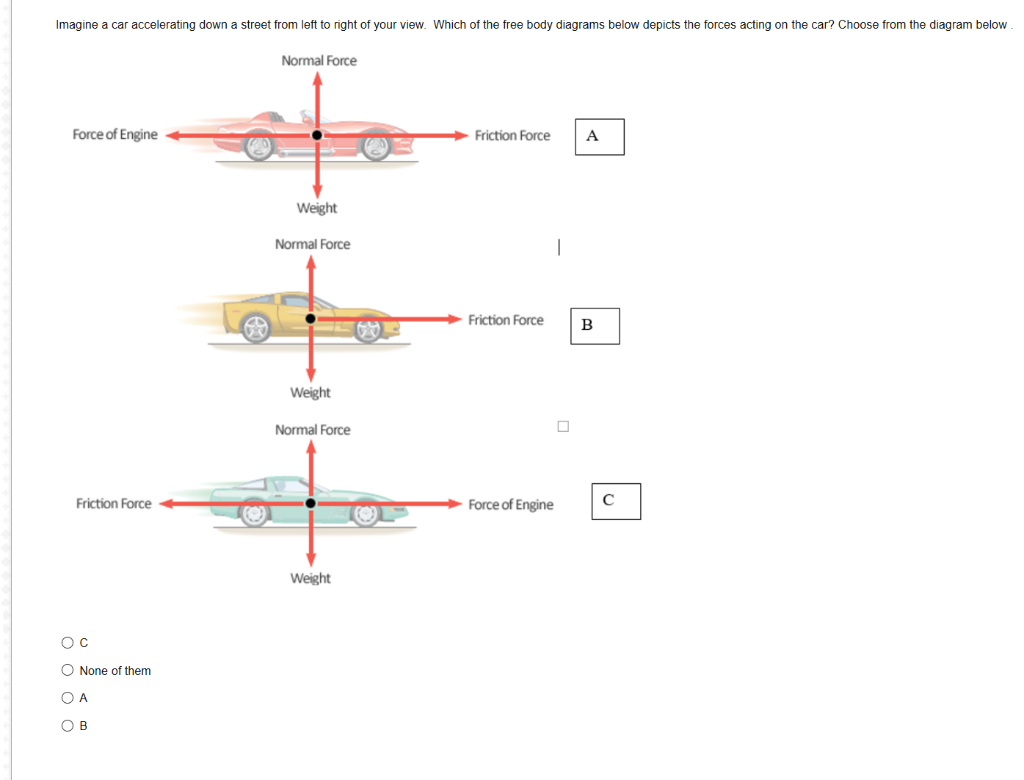

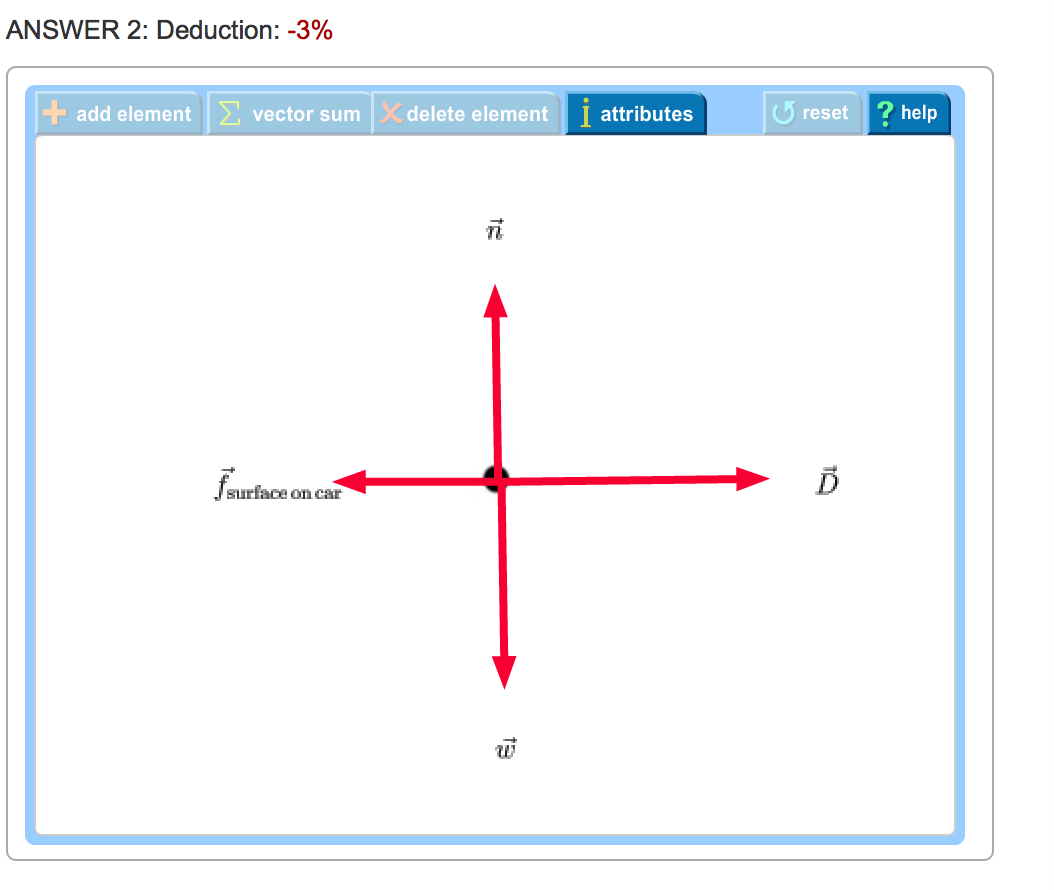

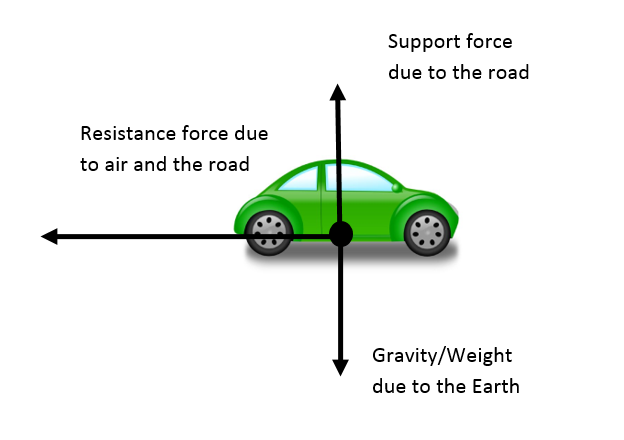



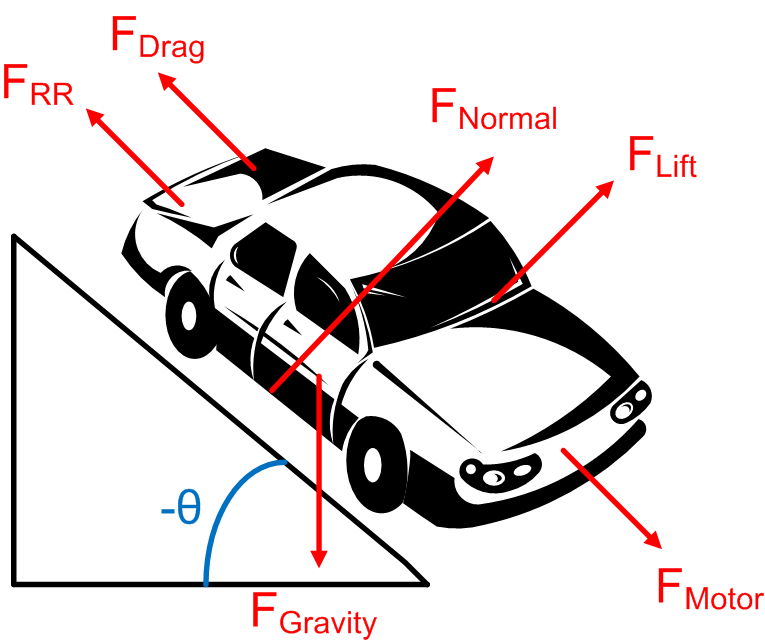



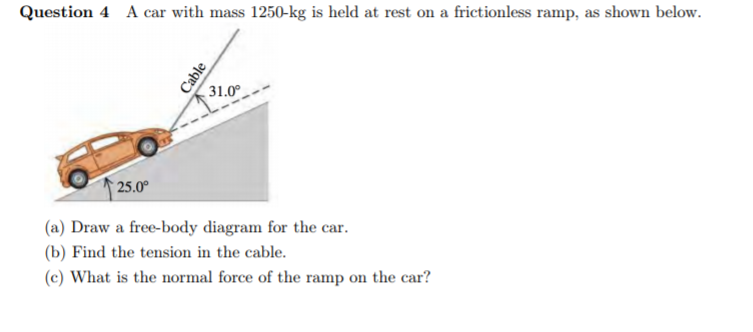



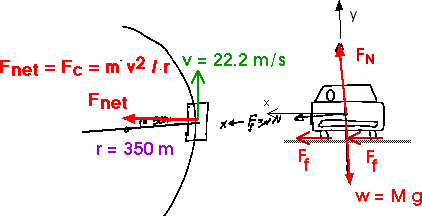




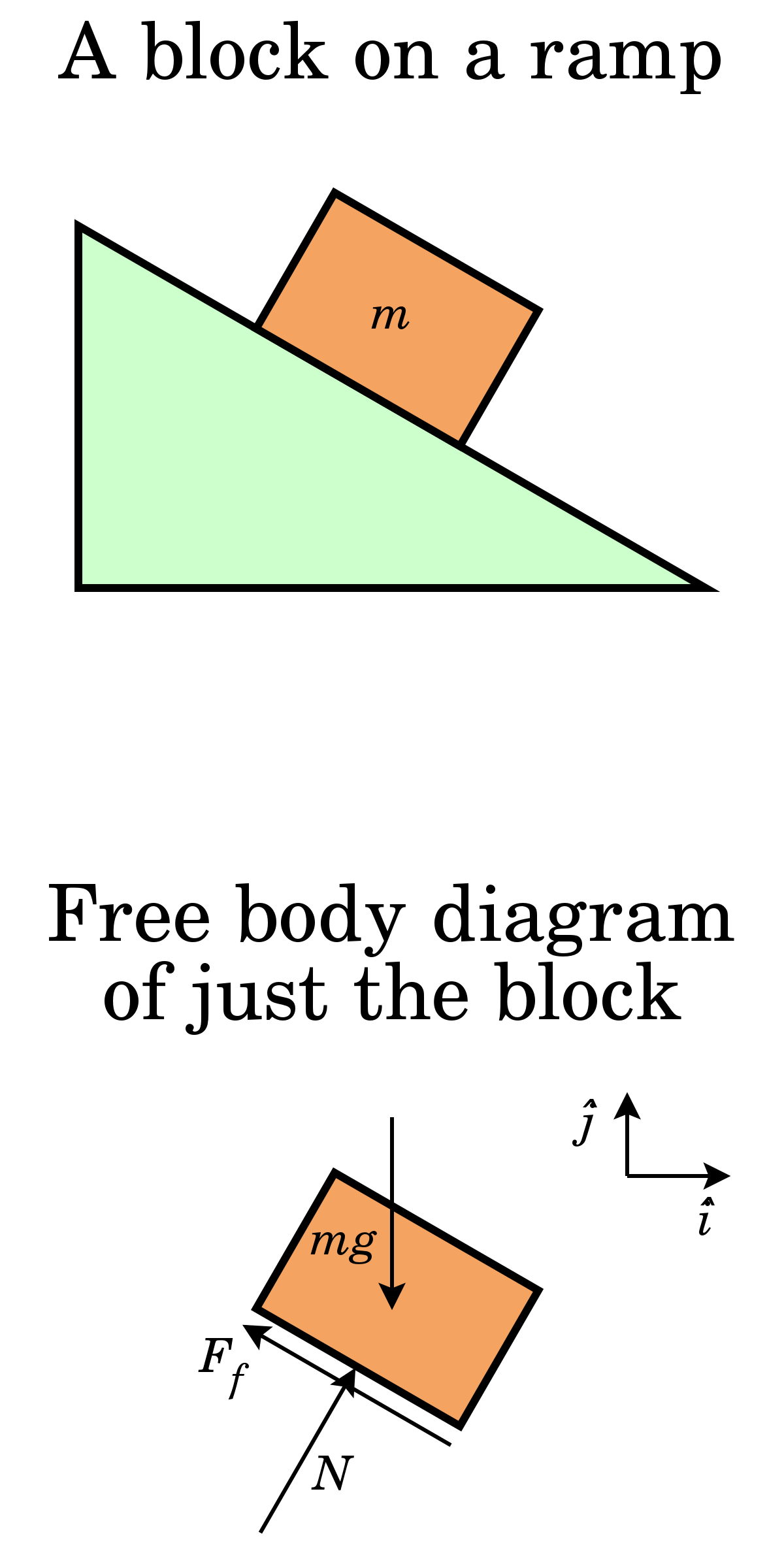
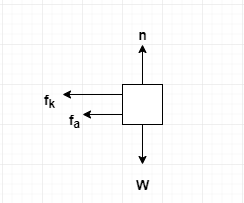


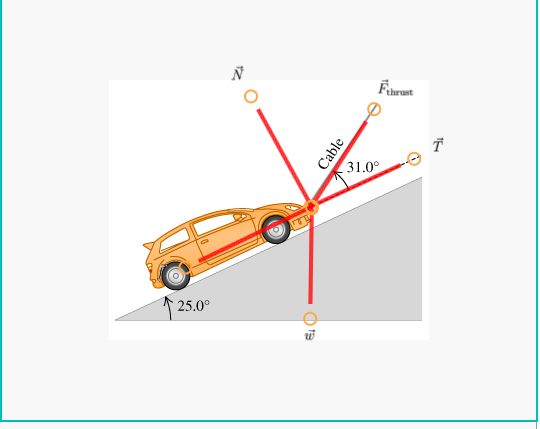
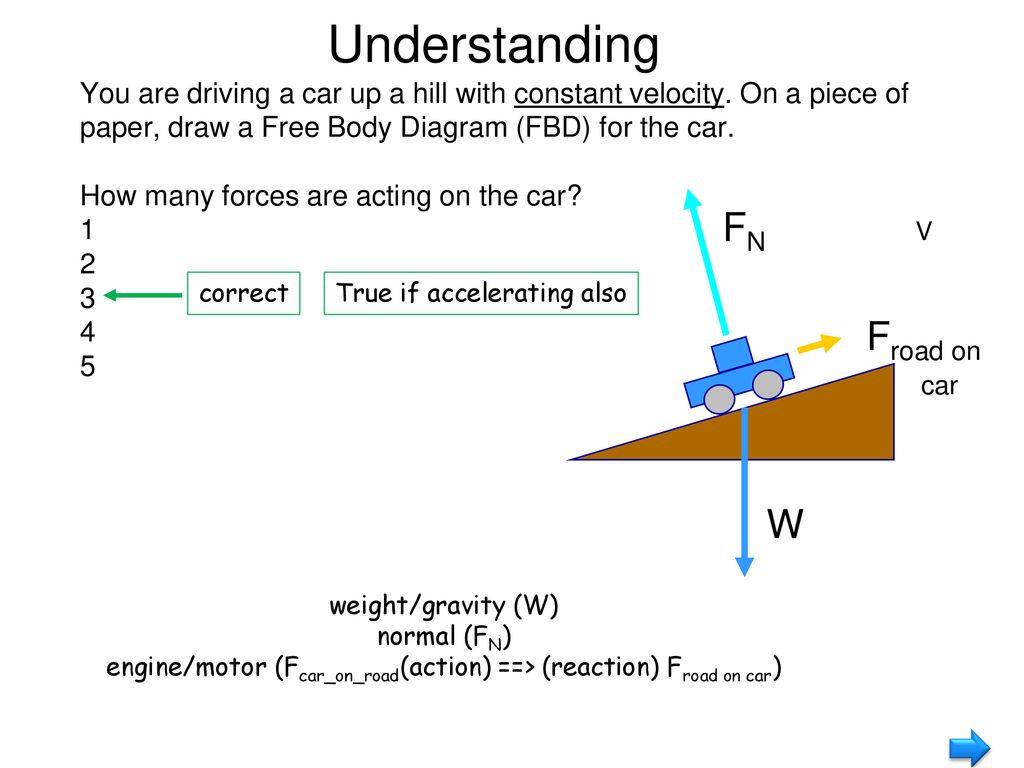




Comments
Post a Comment